One of the most valuable skills for a leader is prioritization. It is a daily requirement for us to decide what our team should work on next, which customers to speak to first, etc.
But often, the complexity and sheer number of decisions keep us from performing this task well.
Here are five prioritization frameworks that will save you dozens of painful hours trying to learn it yourself:
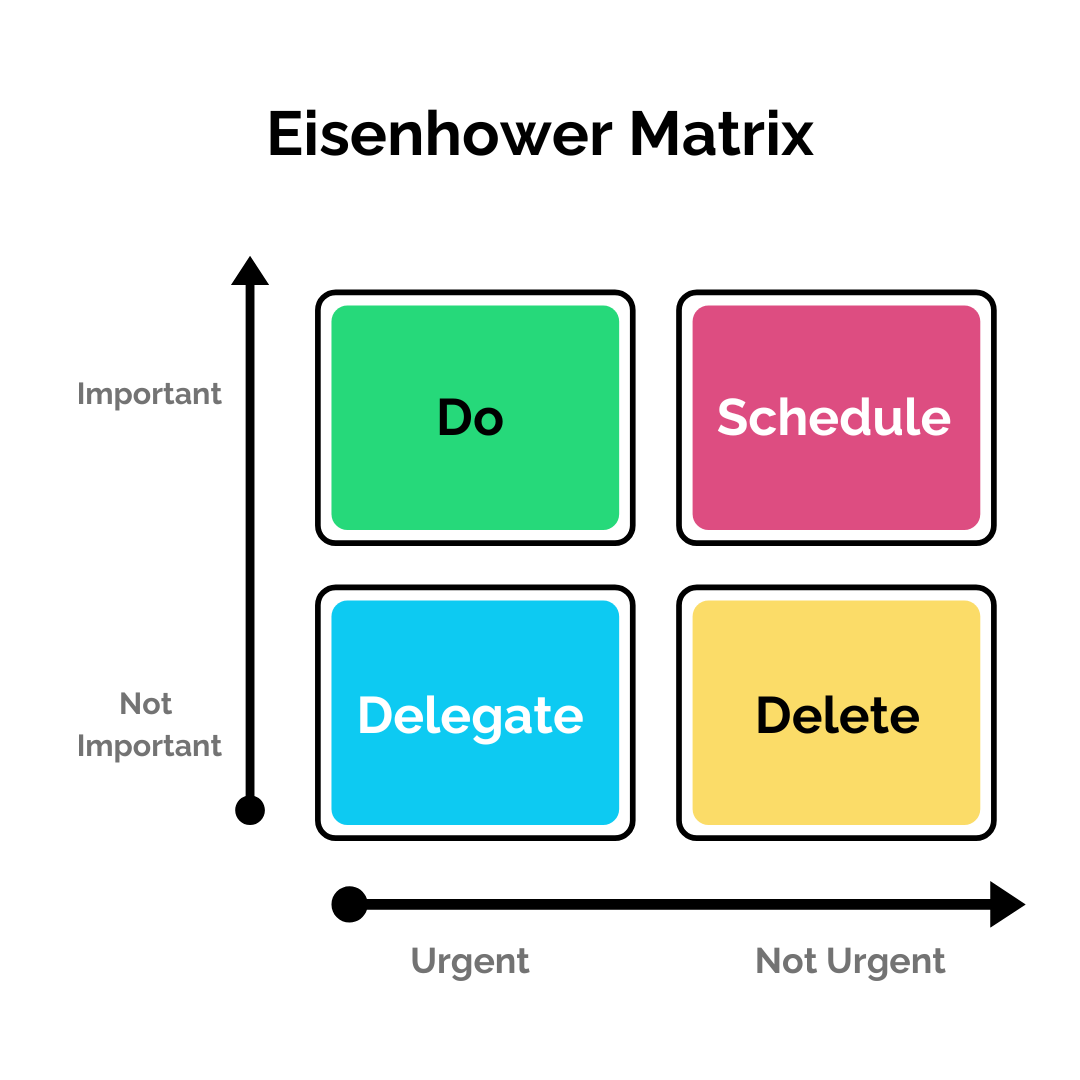
1️⃣ The Eisenhower Matrix
When I discovered this framework it completely changed the way I thought about task prioritization.
How to implement the Eisenhower matrix:
- Group all tasks into two categories: Important and Unimportant
- Break each of these into two sections - Urgent and Not Urgent.
- Remove any tasks that are Unimportant. And Not Urgent
- Do the Urgent Important first, Schedule Important and not Urgent
- Delegate Urgent but not important tasks.
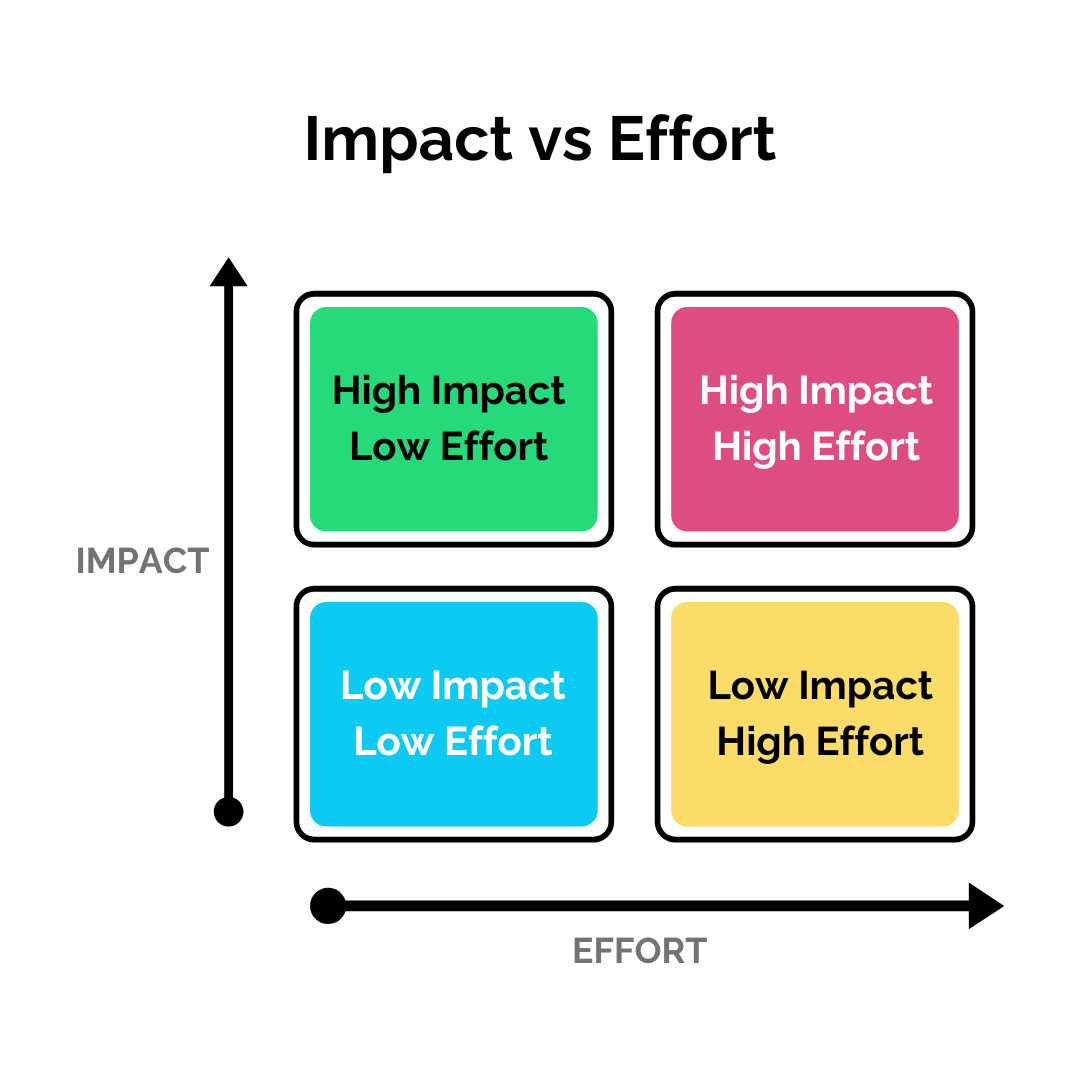
2️⃣ Impact vs Effort - The 2x2 Matrix
The simplest prioritization framework that should be hung in every office. It’s simplicity is correlated with it’s usefulness.
Draw two lines perpendicular, crossing to each other. The horizontal line is Impact - Left to Right → Low to High. The vertical line is Effort - Top to Bottom → High to Low. Place your tasks on the Matrix according to the Effort and Impact they will have
Benefits of the 2x2 matrix:
- Easy to use.
- Simple to understand.
- A clear big picture.
- Useful to communicate.
Do the High Impact Low Effort tasks first
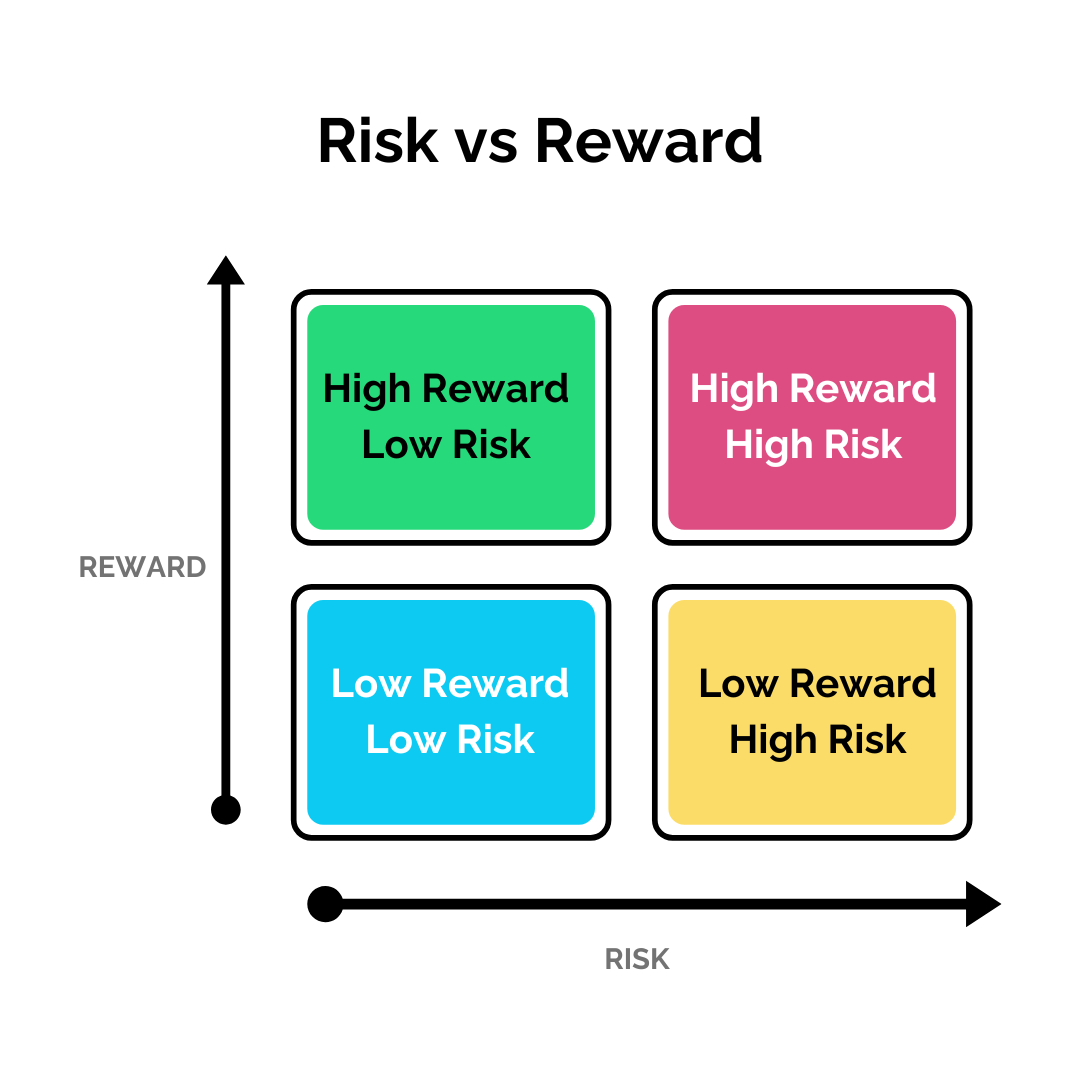
3️⃣ Risk vs. Reward Matrix
Similar to the Impact vs Effort framework, Risk Reward matrix can be used to map ideas, strategies, and directions. It can help you to make more informed decisions by evaluating risks and rewards before you commit to a course of action.
Place your ideas on the matrix:
- Risk is the horizontal line - Left to Right → Low to High.
- Reward is the Vertical line - Top to Bottom → High to Low.
- Avoid High Risk, Low Reward.
- Do Low Risk, High Reward first.
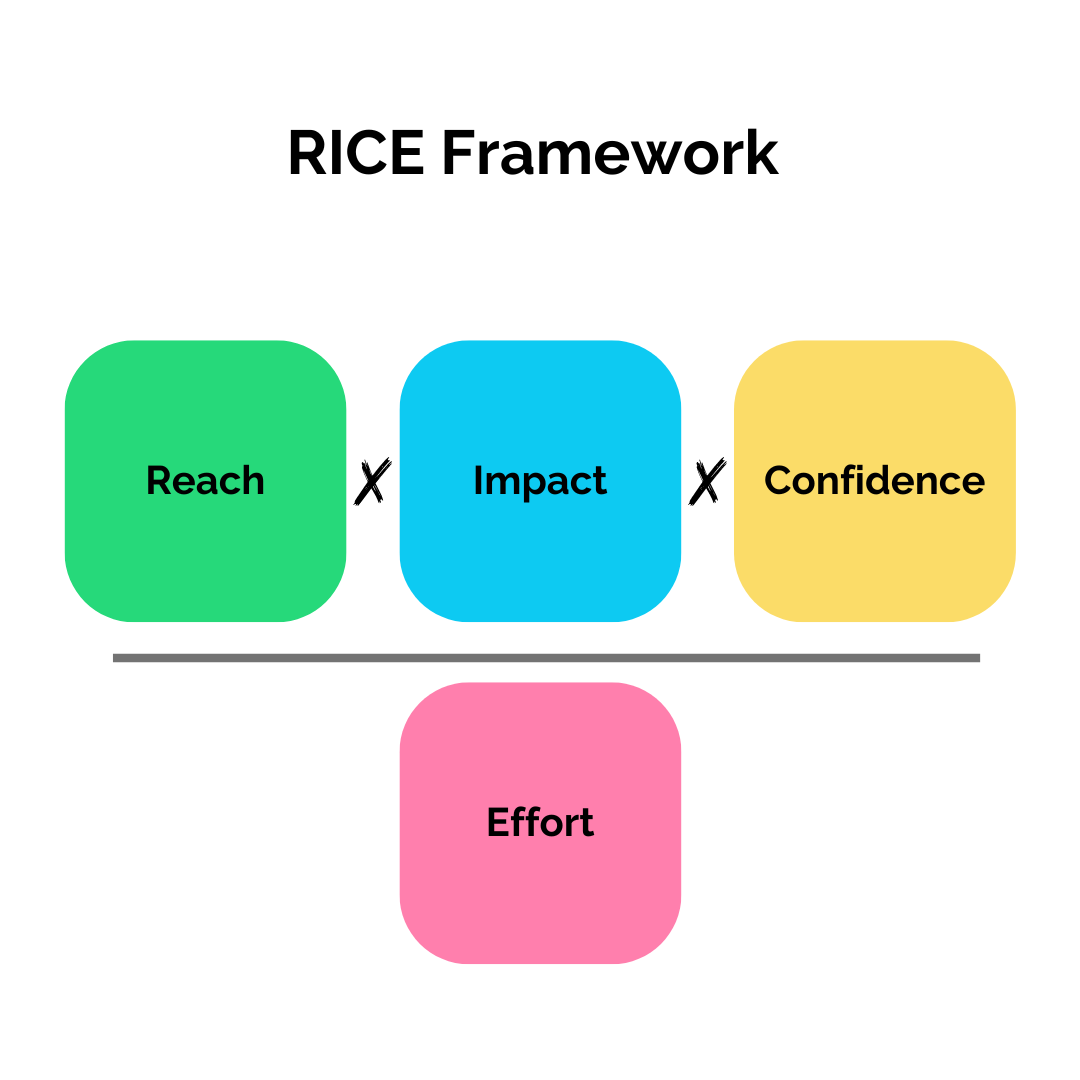
4️⃣ RICE Framework
Struggling with figuring out which task to focus on first? Use the RICE framework, you evaluate each of your tasks by scoring them using to the RICE scoring formula.
The four elements of the RICE Framework are:
- Reach - How many people could this be useful for?
- Impact - How many people will actually use it or buy it?
- Confidence - How confident are you about the R and I metrics?
- Effort - How much effort will it take to make this happen?
List all of your tasks and apply the formula to each. Reach times Impact times Confidence divded by Effort.
Here’s the scoring breakdown:
- Reach: How many people can you reach approximately.
- Impact:
- 0 - no impact.
- 1 - low impact
- 2 - medium impact.
- 3 - high impact.
- 5 - massive impact.
- Confidence:
- 0.5 - low confidence.
- 0.80 - medium confidence.
- 1 - high confidence.
- Effort: Use person months.
- e.g. For 1 person month use 1
- e.g. For 2 person month use 2
The higher the score, the bigger the return on investment.
RICE Framework can used across the board to evaluate new product ideas, which features to build next, or which service you should offer.
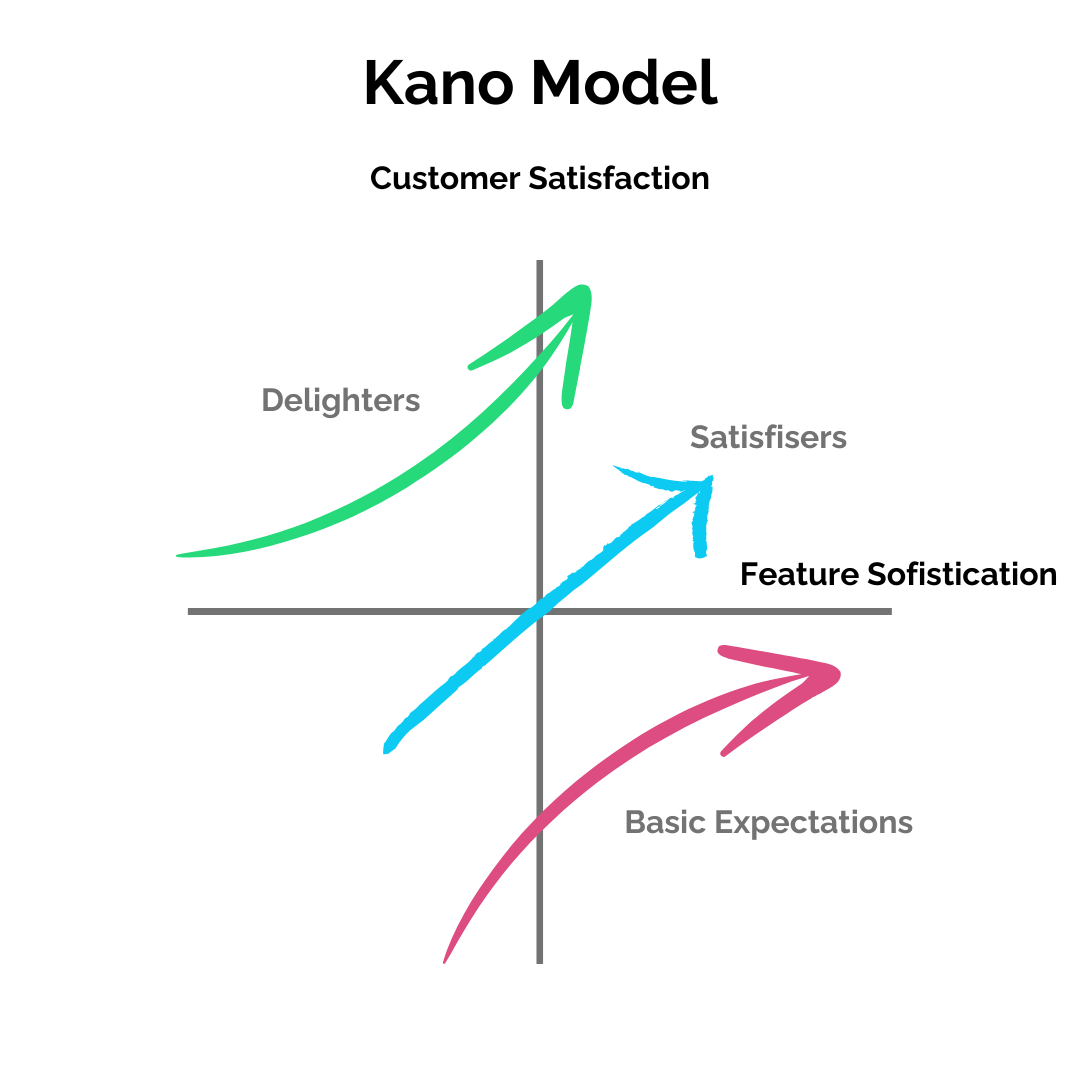
5️⃣ Kano Model
Finally, this is how you achieve the goal of delighting your customers.
Kano Model focuses on three categories:
- Basic expectations.
- Satisfisers.
- Delighters.
Basic Expectations are attributes of your product that customer expects to be there. For example, when you go to a hotel, you expect wifi to be a standard option and free.
Satisfisers are attributes of your product that generate satisfaction, when fulfilled. When you check-in into a hotel, if the check-in experience is fast and painless, you will be satisfied.
Delighters are exciting attributes that customers don’t expect but are delighted when they experienced them.
When you are deciding what features you should build next, sort them into these categories. You should:
- Fulfill all basic expectations first.
- Add as many satisfisers as you can.
- Always include at least one delighter.
–
Prioritizing your work can be a daunting task, but using one of these models should be help you make this job a little easier.